10 Reasons why flying fish are key to marine ecosystems. Flying fish are a unique and fascinating species that play a critical role in marine ecosystems. These fish species are able to “fly” through the air using their modified fins, allowing them to escape predators and travel long distances. But their importance goes beyond just their ability to fly.
In this blog post, we’ll explore 10 reasons why flying fish are key to marine ecosystems, including their role in the food web, their ability to spread sea plant and animal species, and their importance to both commercial and recreational fishing industries.
From their unique biology to their ecological impact, flying fish are truly one of the most important species in the ocean. So, let’s dive in and learn more about these amazing creatures!
Flying fish are a fascinating and unique species that play a crucial role in marine ecosystems. These sea creature are able to “fly” out of the water for short distances, using their large, wing-like fins to glide through the air.
This unique ability allows them to escape predators, travel to new areas, and access food resources that would otherwise be out of reach. But flying fish are not just interesting to watch – they also play a vital role in the marine food web.
They are an important source of food for many larger critters, such as tuna, sharks, and even seabirds. Their presence in an ecosystem helps to maintain a balance of populations, and their disappearance can have a significant impact on the overall health of the ecosystem.
In addition to their role as a food source, flying fishes also help to spread marine organisms and nutrients through their travels. As they move between different habitats, they can transport eggs, larvae, and other organisms to new areas. This can help to increase biodiversity and support the growth of new populations.
Overall, flying fish are a key species in marine ecosystems, playing a vital role in the food web and supporting the growth and diversity of other sea organisms. They are a beautiful and unique species that deserve our attention and protection.
10 Reasons why flying fish are key to marine ecosystems
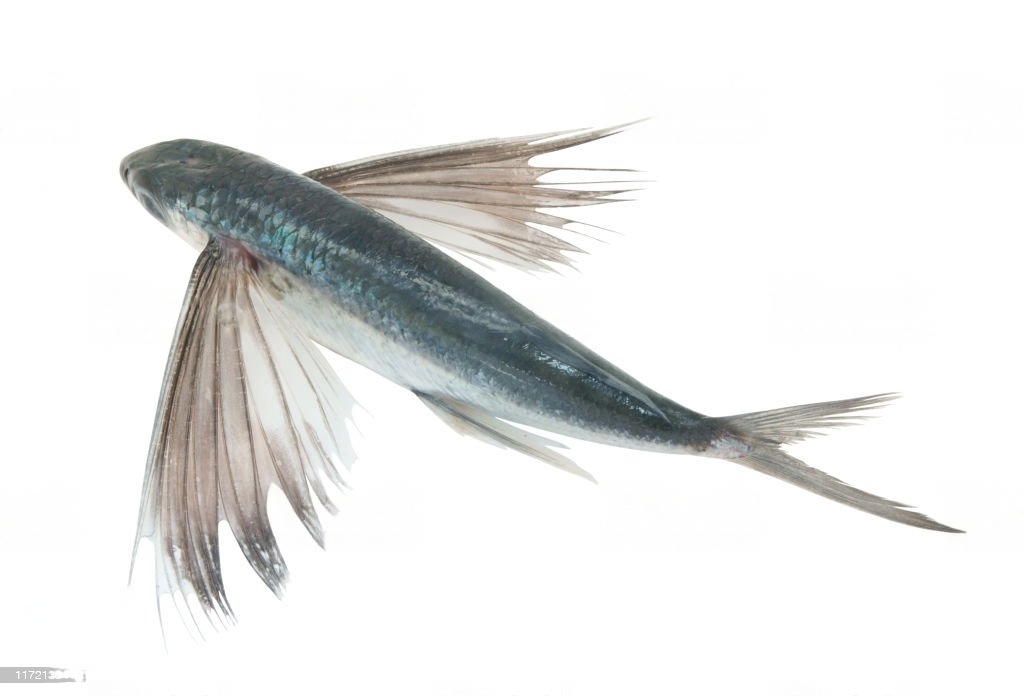
1. Flying fish are food source to tuna, marlin, and swordfish
Flying fish are a unique species and fascinating species that can be found in seas all over the world. These are known for their ability to “fly” through the air, using their large fins to glide above the water surface.
But did you know that flying fish are also an important food source for many larger predatory sea creatures, such as tuna, marlin, and swordfish?
Flying fish are a small, fast-moving sea creature that are found in warm ocean waters. They are typically about 6-12 inches long, and are characterized by their large, wing-like fins that allow them to jump out of the water and fly for short distances.
These fins are called pectoral fins, and they are used to propel the fish through the air.
Tuna, marlin, and swordfish are all large predatory that are found in the open water. They are known for their speed, power, and agility, and are able to hunt and catch a variety of prey, including other fish, squid, and crustaceans. But one of their favorite foods is the flying fish.
Tuna, marlin, and swordfish are able to chase down and catch flying fish in mid-air, using their sharp teeth and powerful jaws to bite through the fish’s body. They are also able to swim at high speeds to chase down flying fish that are still in the water.
The importance of flying fish as a food source for tuna, marlin, and swordfish cannot be overstated. These sea creature are a crucial part of the ocean’s ecosystem, and they play an important role in the food chain.
Without flying fish, these predatory sea creature would have a harder moment finding food, and the overall health of the water would be impacted.
It is important to note that, as flying fish populations decline due to overfishing, pollution, and climate change, it can also affect the tuna, marlin, and swordfish population and their ecosystem.
Therefore, it is essential to ensure the conservation and sustainability of flying fish populations to maintain a healthy ocean ecosystem.
Also useful articles: How Much Aquarium Gravel Do I Need?
Affordable Koi fish
Top pick
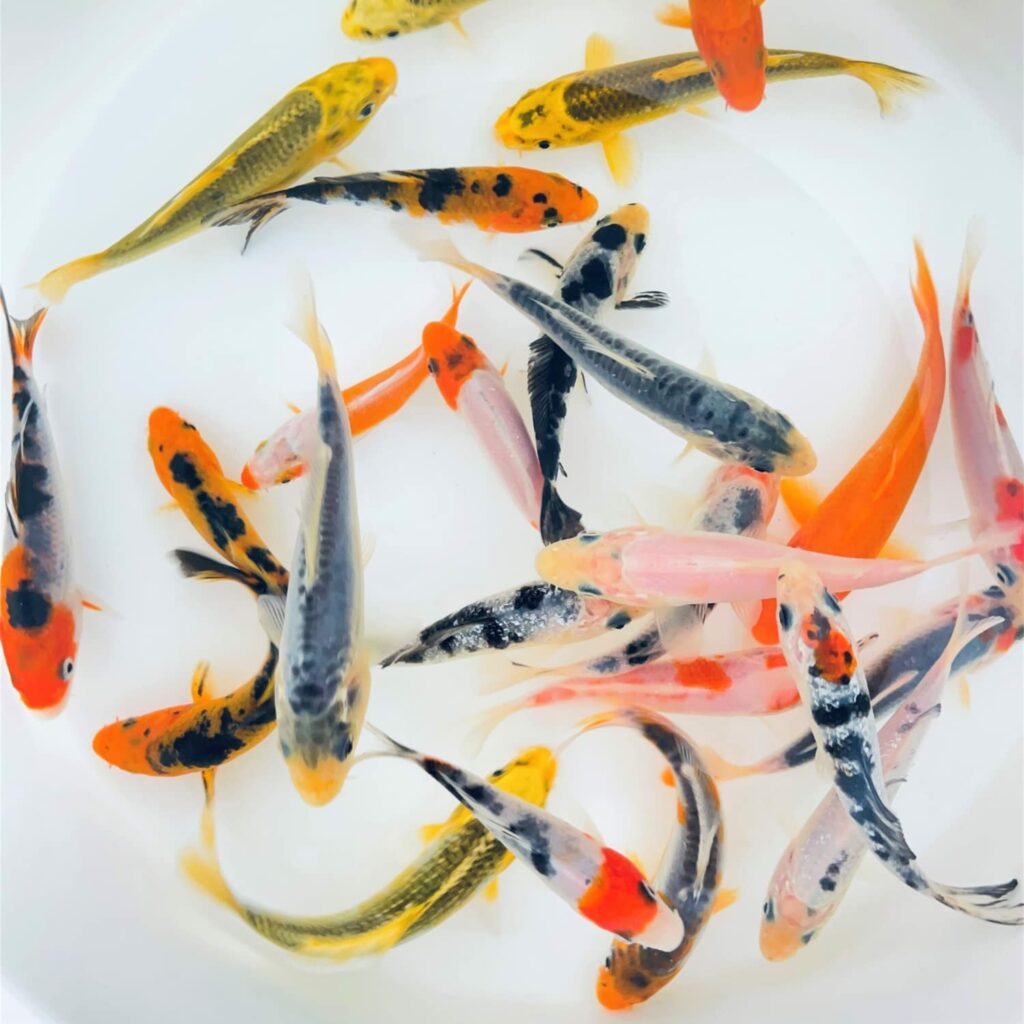
Editor’s choice
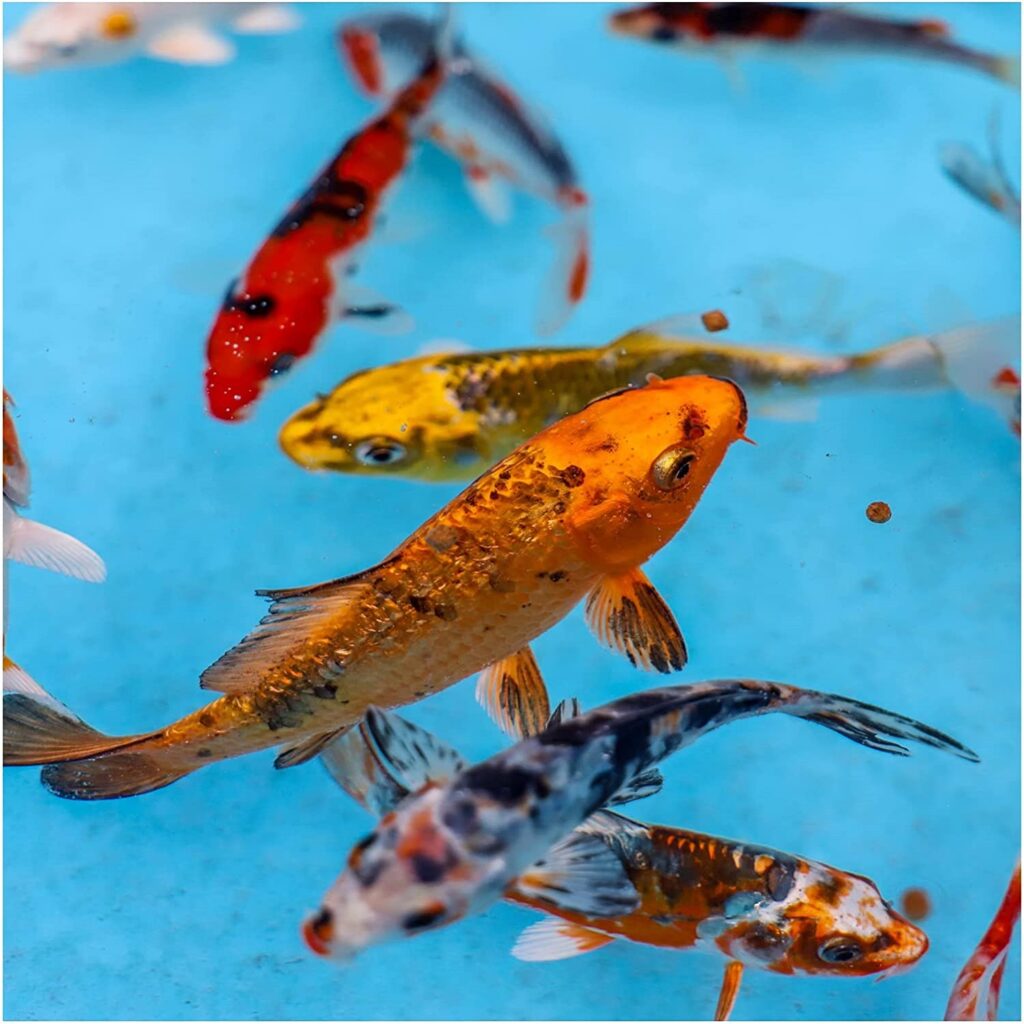
Best value
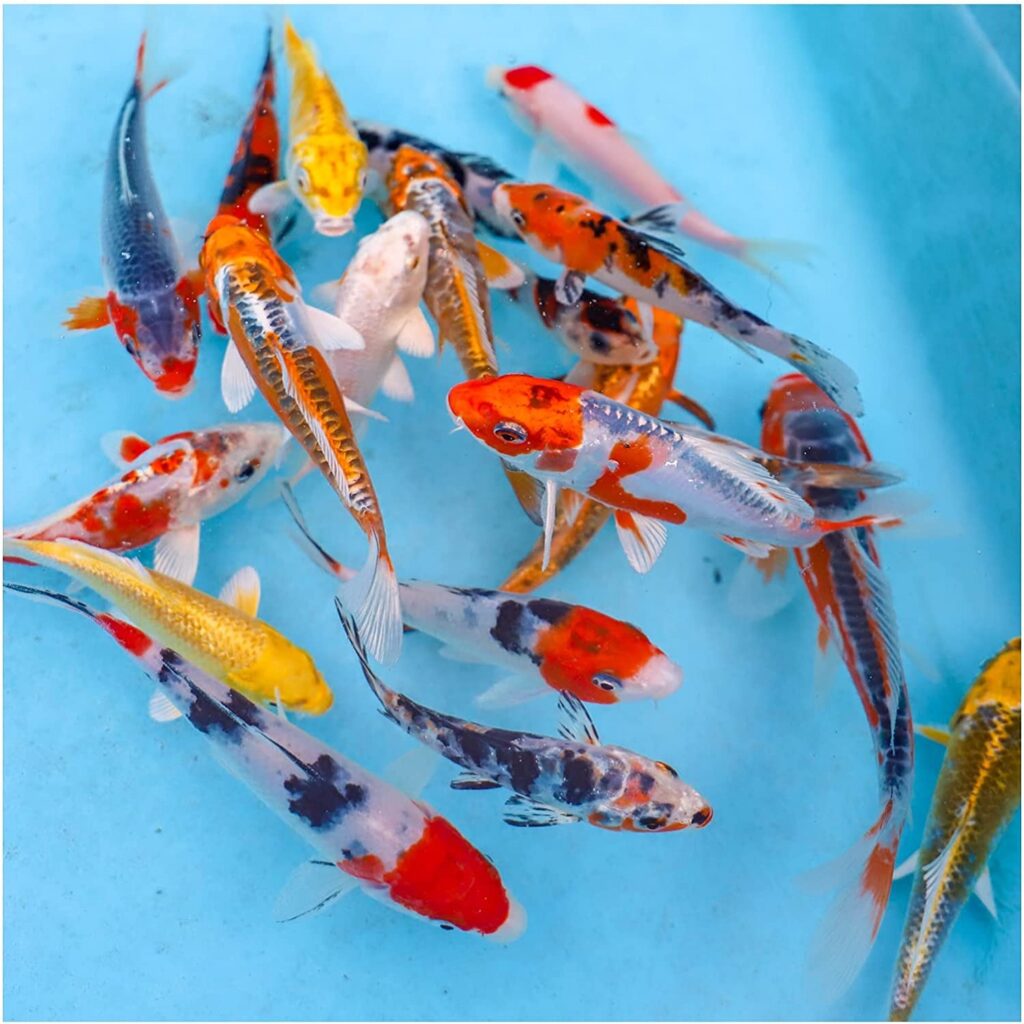
2. They help to control populations of smaller fishes & wildlife
They are refers to apex predators, which are at the top of the food chain in their respective ecosystems. These animals play a crucial role in maintaining balance and controlling populations of smaller fishes. This fish have stunning fish body that is lite and flexible what an evolution.
One of the ways apex predators control populations is through predation. For example, sharks are known to keep populations of smaller fish in check by preying on the weaker or sick individuals. This helps to maintain a healthy balance within their ecosystem and prevents overpopulation of smaller fish.
Another way apex predators control populations is through competition. For example, wolves are known to control the population of elk in Yellowstone National Park by competing for the same food sources.
This results in a decrease in the elk population, which in turn allows for the growth of other plant and animal species in their ecosystem. Apex predators also play a crucial role in shaping the behavior of smaller critters.
For example, the presence of wolves in an ecosystem can cause elk to change their behavior and avoid certain areas, which in turn allows for the growth of vegetation in those areas. This can have a ripple effect on the entire ecosystem, benefiting a wide range of plant and animal species.
However, the presence of apex predators is not always beneficial. In some cases, their populations can become too large and have negative impacts on smaller animals and plants.
This highlights the importance of maintaining a delicate balance in ecosystems and the need for careful management of apex predator populations.
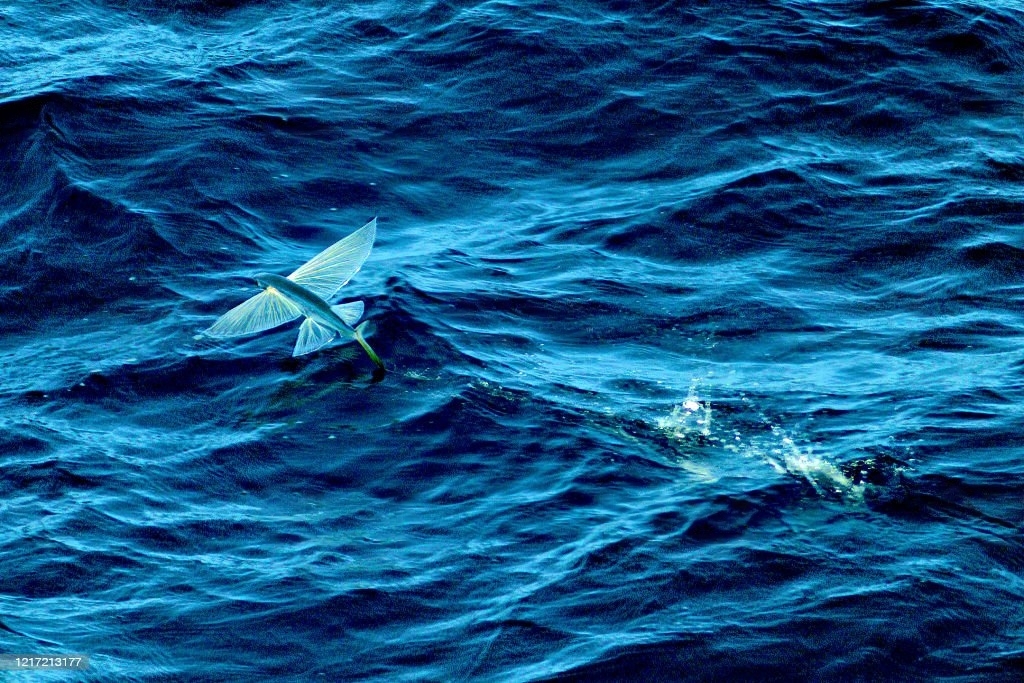
3. Marine glider are important prey species for many seabirds
This fish flying creature, also known as wateric drones, are becoming increasingly important as a prey species for many seabirds. These autonomous underwater vehicles (AUVs) are designed to glide through the water, collecting data on temperature, salinity, and other oceanographic parameters.
They are used for a variety of research and monitoring purposes, such as studying water currents and measuring the effects of climate change on marine ecosystems. Seabirds, such as petrels, albatrosses, and shear waters, are highly dependent on sea prey for their survival.
These aves spend most of their lives at sea, and rely on a steady supply of fish, squid, and krill to feed themselves and their young ones. Flying fish, with their slow, steady movements and ability to remain at depth for long periods of time, are an attractive prey item for these birds.
flying fish are also an important prey species for sea mammals such as dolphins and whales. These animals are known to follow flying fish, hunting them for food. The slow, steady movements of flying fish make them easy prey for these marine mammals, which are able to locate and capture them with ease.
Despite the importance of flying fish as a prey species, there is still much to be learned about their role in marine ecosystems.
Scientists are currently studying the impact of flying fish on seabirds and sea mammals, in order to understand how these critters are affected by changes in the ocean environment.
Also useful articles: Is Aquarium Salt Safe for Snails?
Koi fish feed
Top pick

Editor’s choice
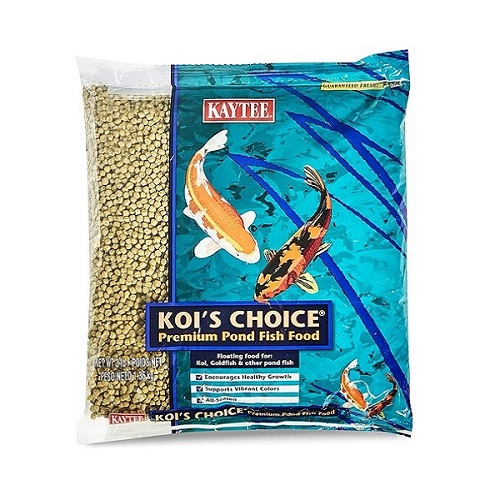
Best value
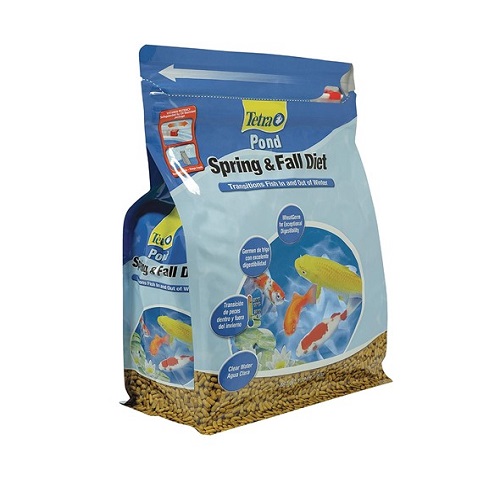
4. They are important for maintaining the balance of the ocean’s food web
The ocean is home to a diverse array of species that form a complex food web. This food web is needed for maintaining the balance of the water ecosystem. At the base of the food web are phytoplankton, small sea plants that use photosynthesis to convert sunlight into energy.
These tiny organisms form the foundation of the ocean’s food web, providing energy for the next level of organisms: zooplankton. Zooplankton, small aquatic animals, feed on phytoplankton and in turn provide food for small fish, which then provide food for larger fish and marine mammals.
One important group of species that play a key role in maintaining the balance of the water’s food web are krill. Krill are small crustaceans that are a major food source for many sea animals, including whales, seals, and penguins.
They also play an important role in the carbon cycle, helping to remove carbon from the atmosphere and store it in the water.
Another important group of species that help maintain the balance of the ocean’s food web are coral reefs. Coral reefs provide habitat for a wide variety of marine species, including fish, crustaceans, and mollusks. They also help to protect coastlines from erosion and storm surges.
However, coral reefs are facing numerous threats, including pollution, climate change, and overfishing. In addition to krill and coral reefs, there are many other species that play important roles in the water’s food web.
For example, seagrass beds provide habitat and food for a wide variety of species, while mangroves protect coastlines and provide nursery habitats for fish and crustaceans.
It’s important to understand the significance of these species and the role they play in the water’s food web. The loss of these species can have a ripple effect on the entire water ecosystem, disrupting the balance and potentially leading to the collapse of entire food webs.
Therefore it’s crucial to protect these species and their habitats to ensure the health and resilience of the ocean’s ecosystem. It’s important to remember that we all have a role to play in protecting the ocean’s food web.
We can reduce our impact on the water by reducing our consumption of seafood, using eco-friendly products, and supporting conservation efforts. By working together, we can help ensure that the ocean’s food web remains balanced for future generations to enjoy.
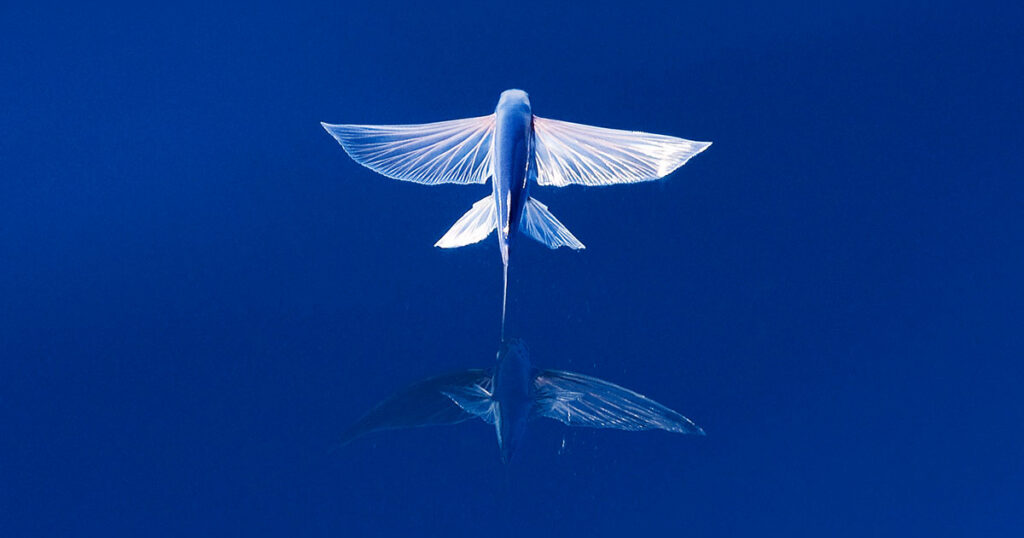
5. Gliding fish can fly up to 60 miles per hour due to there bird like fish body
Gliding fish, also known as flying fish, are a unique species that can soar through the air at incredible speeds without torching the surface. These fish have evolved a shape and set of fins that allow them to take to the skies and fly up to 60 miles per hour what a great flight distance.
The secret to their aerial abilities lies in their pectoral fins, which are large and elongated, much like the wings of a bird. These fins are used to generate lift and provide propulsion as the fish glides through the air. In addition, gliding fish also have a streamlined shape that helps to reduce drag and increase their speed.
But why do gliding fish fly? One of the main reasons is to escape predators. When threatened by larger fish or other sea animals, gliding fish will leap out of the water and fly through the air to evade capture. This behavior is known as “volant escape,” and it is a highly effective survival strategy for these fish.
Another reason gliding fish fly is to find food. Some species of gliding fish will fly to reach new areas where there is more food. Gliding fish are typically found in tropical and subtropical waters, and they are known to fly for distances of up to 1,500 feet without torching the surface.
In addition, gliding fish also have a unique set of eyes that helps them to see in the air. These eyes are larger than those of other fish, and they are positioned high on the head, giving the fish a wide field of vision. This helps the fish to navigate and avoid obstacles while flying through the air.
Overall, gliding fish are a fascinating species that is the facts, with having a flight distance they have evolved some truly remarkable adaptations for flying. Next time you’re near the ocean and see a gliding fish, you’ll know why it’s able to fly at such high speeds.
Also useful articles: Is Aquarium Water Good for Plants?
Best koi selling T-shirt
Top pick
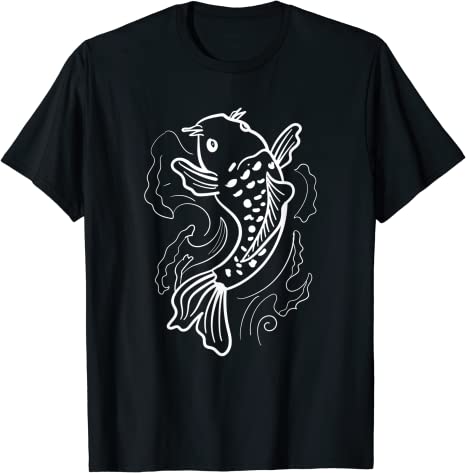
Editor’s choice
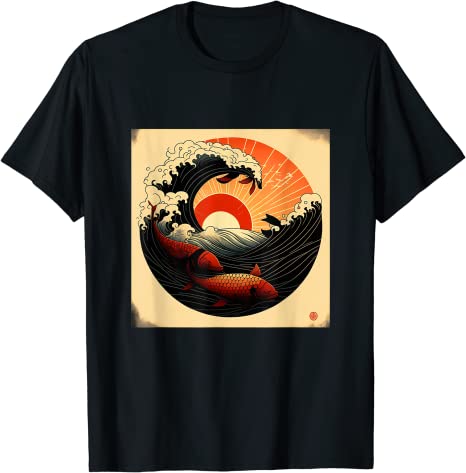
Best value

6. They can migrate long distances, helping to distribute nutrients
Migratory critters are a crucial part of many ecosystems, helping to distribute nutrients and maintain biodiversity. These animals travel long distances, often covering thousands of miles, in search of food and breeding grounds. Some of the most well-known migratory critters include birds, fish, and mammals.
Birds are perhaps the most iconic migratory critters, with many species traveling thousands of miles each year. The Arctic tern, for example, makes a round-trip migration of over 22,000 miles each year, flying from the Arctic to the Antarctic and back again.
This unbelievable journey allows the tern to take advantage of the abundant food sources in the Arctic during the summer and the more moderate temperatures of the Antarctic during the winter.
Fish are also known for their long migrations, with many species traveling between freshwater and saltwater environments. The salmon, for example, are born in freshwater streams and rivers, but migrate to the ocean to feed and grow before returning to their birthplace to spawn.
This migration not only helps the salmon to find food and breeding grounds, but also helps to distribute nutrients throughout their ecosystem. Mammals, such as caribou and wildebeest, also migrate long distances in search of food and breeding grounds.
The wildebeest migration in the Serengeti-Mara ecosystem is one of the most spectacular examples, with over 1.5 million wildebeest traveling over 500 miles each year.
This migration not only helps the wildebeest to find food, but also helps to distribute nutrients throughout their ecosystem by fertilizing the grasslands as they move.

7. The sea creatures are also known to spread seeds and other plant material
The ocean is a vast and mysterious place, filled with countless forms of life. While many people think of the sea as home to only fish, whales, and other sea critters, it is also home to a wide variety of plants. These plants play an important role in the water ecosystem, providing food and shelter for countless creatures.
One of the most fascinating ways in which sea creatures contribute to the ocean’s plant life is through their ability to spread seeds and other plant material. This process, known as seed dispersal, is crucial for the survival and growth of many different species of plants.
Many sea creatures, such as sea turtles, sea birds, and even some species of fish, are known to carry seeds and other plant material on their bodies as they travel through the water. This allows the plants to spread to new areas, where they can take root and grow.
In addition to seed dispersal, sea creatures also play a vital role in pollination, the process by which plants reproduce. Many species of marine plants rely on sea creatures, such as jellyfish and sea anemones, to transfer pollen from one plant to another, allowing the plants to reproduce.
Overall, the sea creatures play a much bigger role in the ocean’s ecosystem than we may think. They not only provide food for other creatures but also help in the spread of plants and their reproduction. The next time you see a sea turtle or a sea bird, remember that they may be carrying with them the seeds of new plant life.
Also useful articles: How Much Aquarium Salt per Gallon?
8. Marine glider are important species for sport fishing with commercial value
flying fish, also known as ocean gliders, are a unique and important species for sport fishing and commercial value. These underwater vehicles are designed to move through the water by adjusting their buoyancy, allowing them to glide through the water with minimal power consumption.
One of the benefits of flying fish is their ability to collect data on the ocean’s environment and its inhabitants. This information can be used to improve sport fishing by identifying areas with high concentrations of fish.
Additionally, flying fish can be used to monitor water conditions, such as water temperature and salinity, which can also help to improve sport fishing. flying fish are also valuable for commercial reasons, such as oil and gas exploration, as well as for military operations.
They can be used to survey underwater areas for potential resources and identify potential hazards. flying fish are versatile, cost-effective and eco-friendly, making them an ideal tool for various applications in water exploration, marine resource management and coastal zone monitoring.
They have a long deployment duration and can operate in remote areas, providing valuable data and increasing our understanding of the water. With the help of flying fish, we can preserve the ocean’s resources and protect the livelihoods of those who depend on it.
Top pick
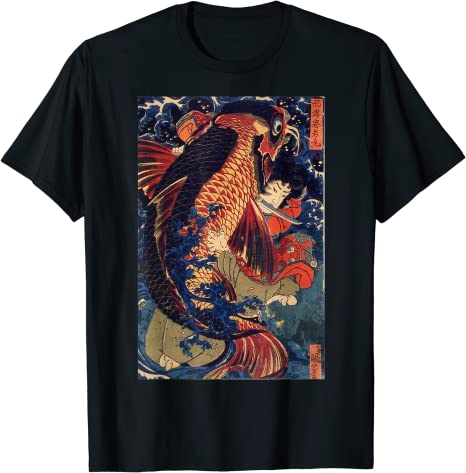
Editor’s choice
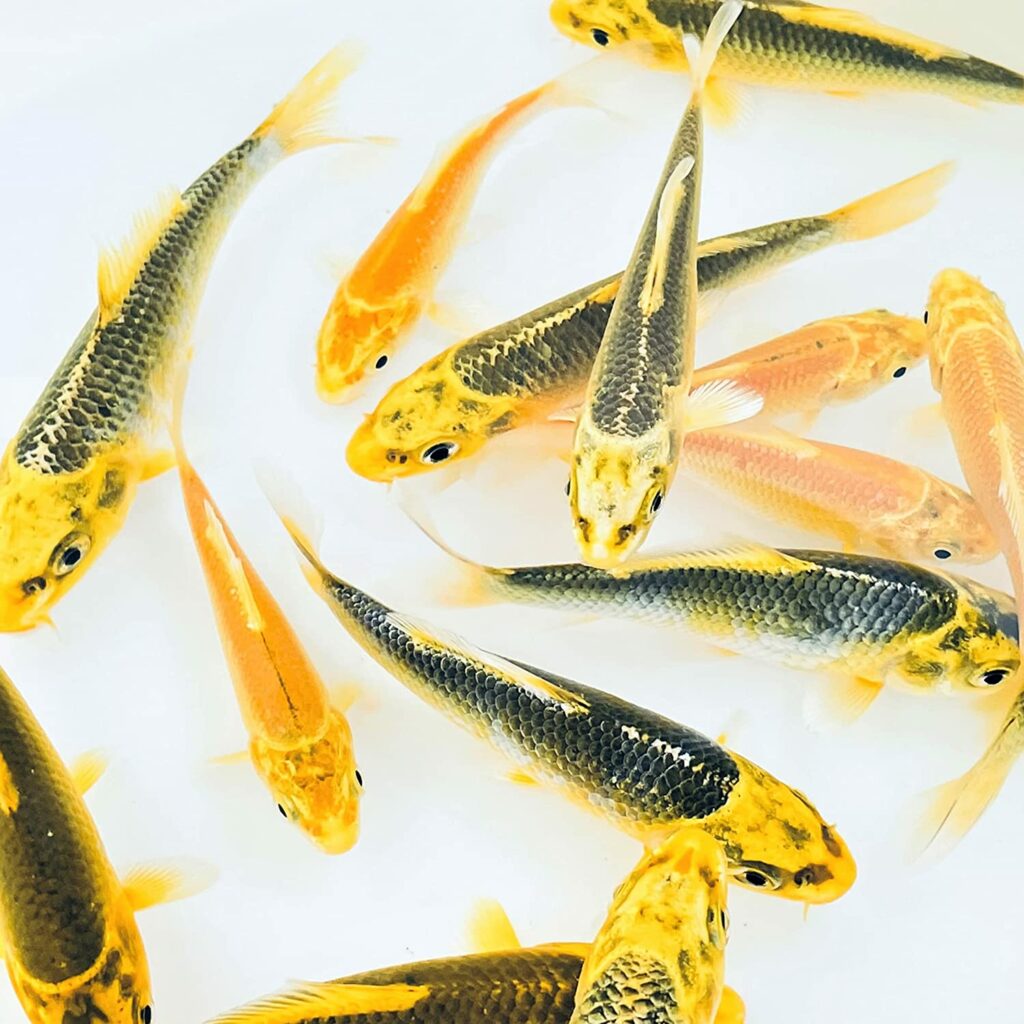
Best value
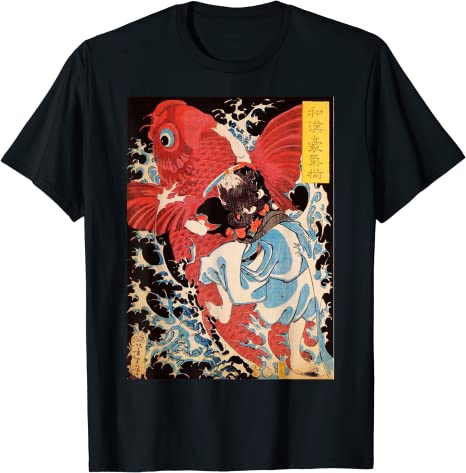
9. Winged fish are indicators of the health of the ocean life
Winged fish, also known as flying fish, are a unique and fascinating group of marine creatures that are found in tropical and subtropical waters around the world. These fish are able to “fly” through the air for short distances by using their large, wing-like fins to glide above the surface of the water.
But why are winged fish important? They are actually considered to be indicators of the health of the ocean ecosystem. Winged fish are a key food source for many larger marine animals, such as tuna, marlin, and swordfish.
If the population of winged fish is declining, it is likely that the larger predatory fish that depend on them for food are also facing challenges.
The winged fish population is also affected by water pollution, overfishing, and climate change. Polluted water can contain harmful chemicals that can harm winged fish and their eggs, while overfishing can deplete the population.
Climate change is also having an impact, as warmer waters can affect the breeding and survival rates of winged fish.
In order to protect winged fish and the larger ocean ecosystem, it is important to monitor their population and take steps to reduce pollution and overfishing. By doing so, we can ensure that winged fish continue to thrive, and that the water remains healthy for generations to come.
Also useful articles: 20 Gallon Aquarium Kit
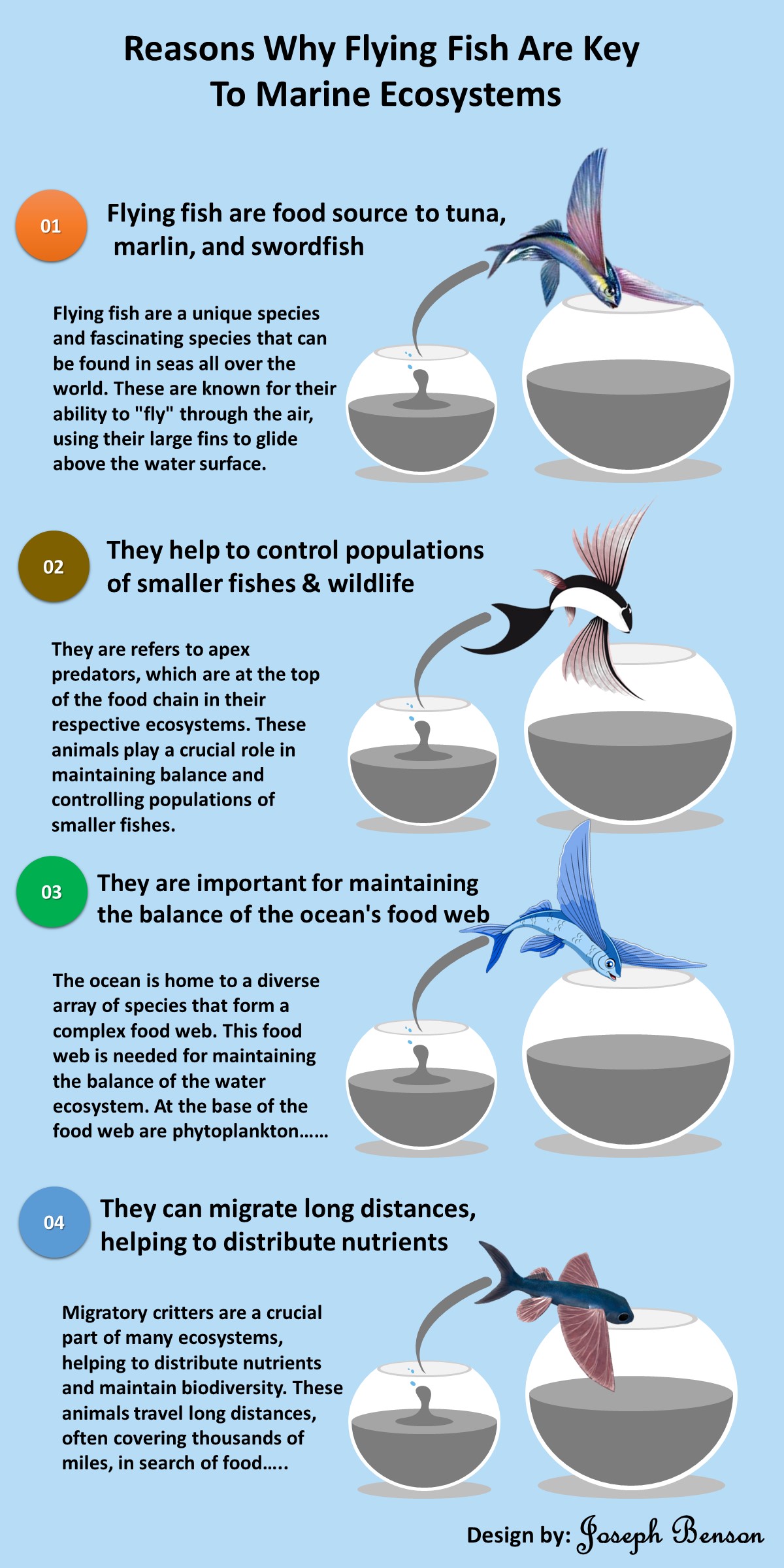
10. Winged fish play an important role in ocean ecosystem
Flying fish, also known as flying fish, play a crucial role in the ocean ecosystem. These fish are able to fly out of the water and glide for distances of up to 655 feet, using their large pectoral fins as wings. This unique ability allows them to escape from predators and to travel to new areas to feed and breed.
In addition to their ecological importance as prey for larger sea animals, flying fish also play a role in seed dispersal. As they fly through the air, they can inadvertently carry with them small seeds or spores from one area to another, helping to spread marine plants and other organisms.
Furthermore, flying fish also contribute to the ocean’s carbon cycle. They consume large amounts of plankton and small fish, which in turn helps to control the growth of these populations and keep the ocean’s carbon levels in balance.
Without the presence of flying fish in the water, the delicate balance of ecosystem could be disrupted.
Overall, flying fish play a vital role in maintaining the health and diversity of the aquatic ecosystem. Their unique abilities and ecological importance make them a fascinating and important part of the marine world. This marine life is a stunning creature among marine fishes.
FAQ
1. What is the purpose of flying fish?
Flying fish beauty attract people and fishermen, flying fish also provide food for man.
2. What are cool facts about flying fish?
They can actually fly, flying fish can fly for one killometer.
3. How do flying fish survive in the ocean?
Their streamlined torpedo shape helps them gather enough underwater speed to break the surface, and their large, wing-like pectoral fins get them airborne.
4. Why do flying fish follow boats?
To escape predators, to flee from surprises like boat engines next to them, perhaps to entertain you during your ride to a dive site.
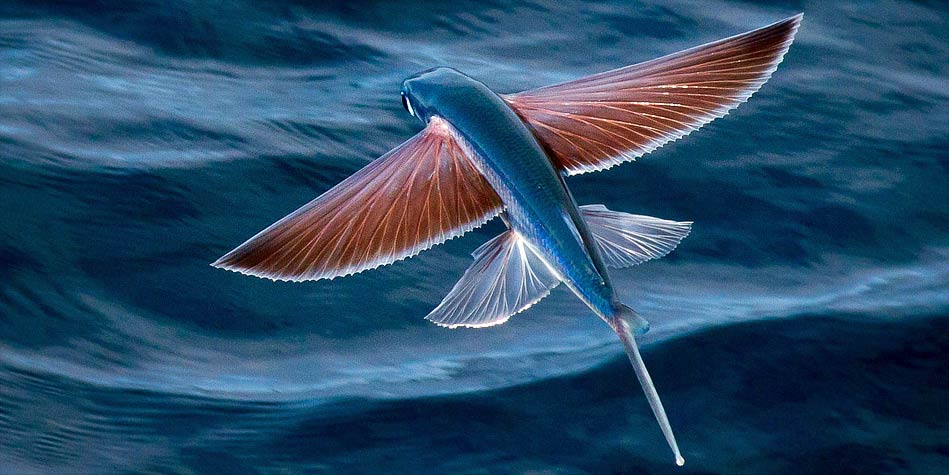
Conclusion
In conclusion, flying fish are not only a unique and fascinating species but also a crucial food source for tuna, marlin, and swordfish. They play an important role in the ocean’s ecosystem and it is important to ensure their conservation and sustainability for a healthy ocean.
Apex predators play a vital role in maintaining balance and controlling populations of smaller fishes and wildlife. Their presence can have both positive and negative impacts on ecosystems, which is why it is important to understand their role and manage their populations accordingly.
flying fish are not just a valuable tool for scientific research, they are also an important prey species for many seabirds and marine mammals.
As we continue to learn more about these fascinating creatures, we will be able to better understand the complex relationships between marine animals and their environment.
Migratory critters are a vital part of many ecosystems, helping to distribute nutrients and maintain biodiversity. This tropical marine creature is hard to see, you can find them in some tropical body of water.
They can travel long distances in search of food and breeding grounds, and their movements have a profound impact on the ecosystems they inhabit no matter how tropical it is. It is important to protect and conserve these critters, as their loss could have severe consequences for the health of our planet.
Also useful articles: Aquarium Undergravel Filter
Other related articles
- 5 Best Aquarium Lamp You Can Buy Now
- Aquarium 120 Liters | The Best Fish and Plant Options
- 10 Fascinating Facts About Aquarium Jellyfish You Didn’t Know
- Aquarium Aesthetic | The Art Of Aquarium Design
- Top 10 Aquarium Stand for Every Budget and Style
- 5 Compelling Reasons Why Fish Farming is Essential
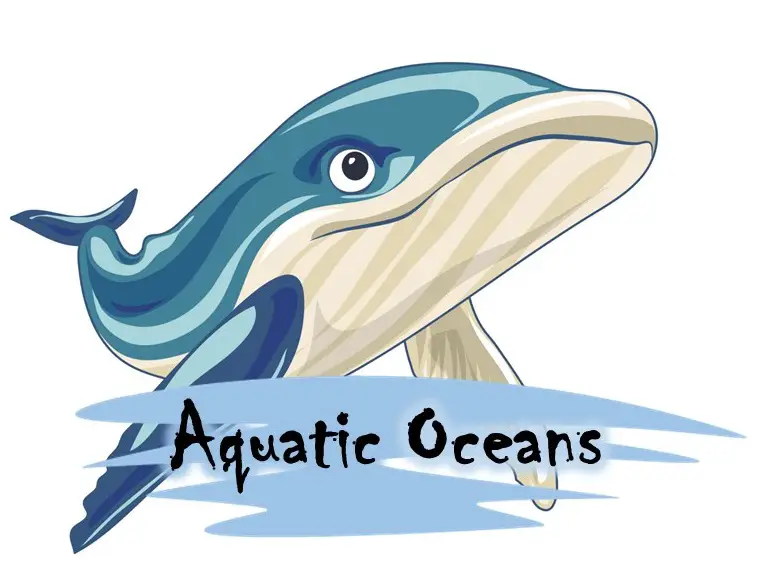
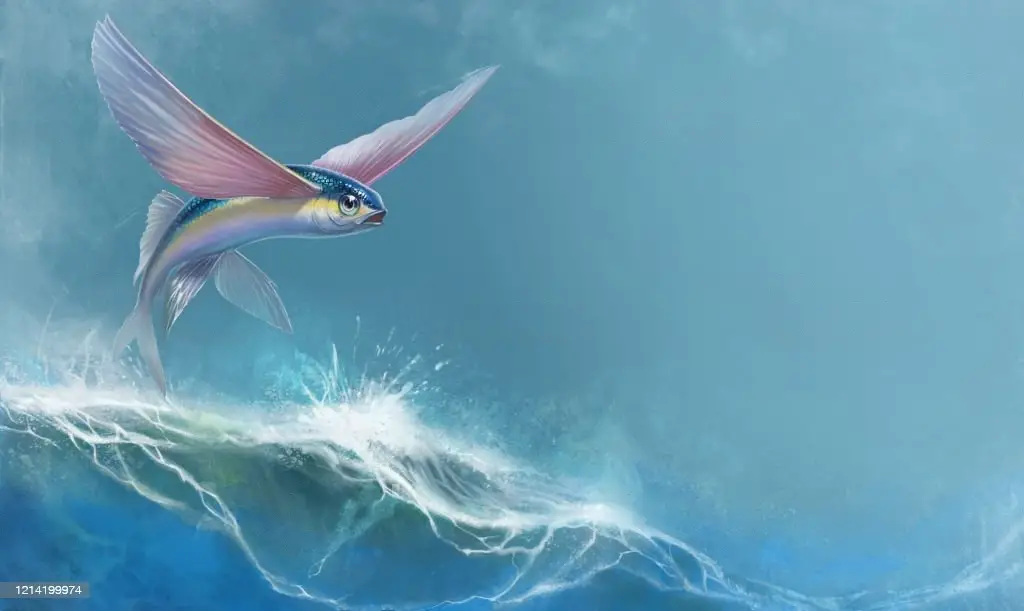
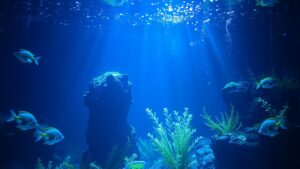
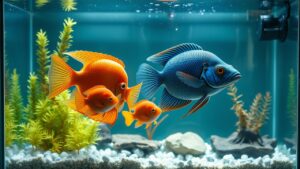



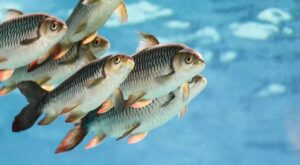
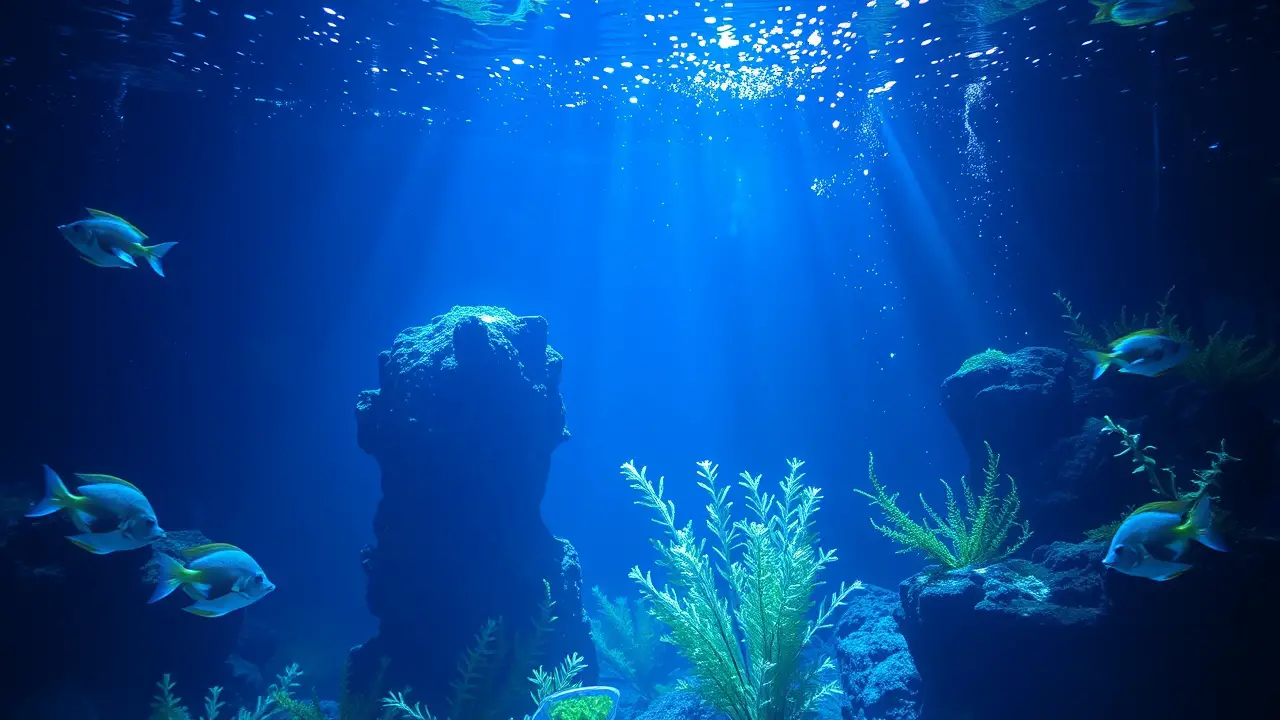
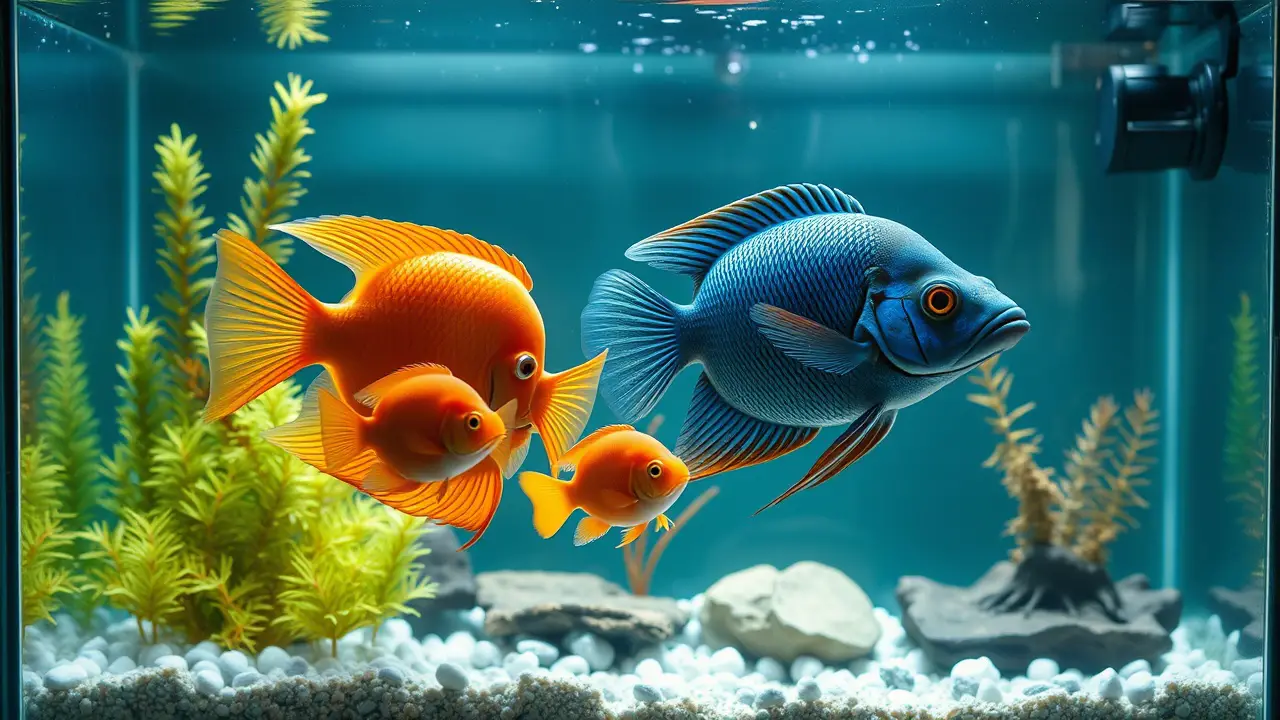
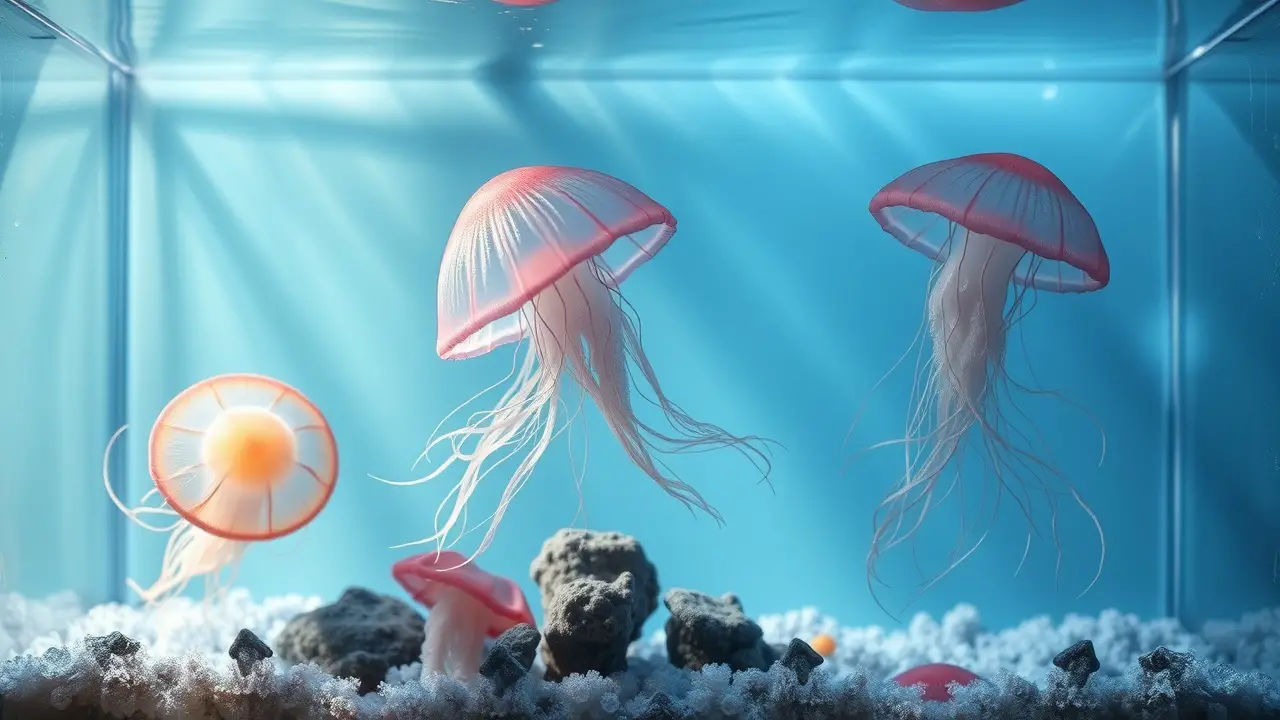
Leave a Reply